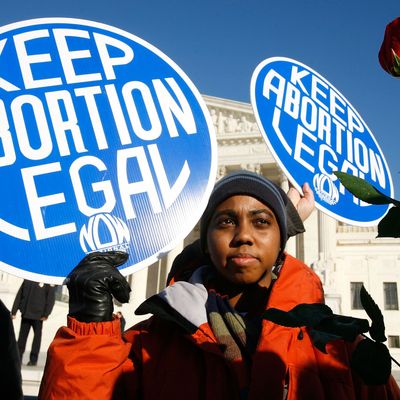
Economist Brad DeLong created something of a stir with a series of tweets and an interview in which he suggested Clintonian centrists needed to “pass the baton” of leadership in the Democratic Party to the left for a while, offering constructive advice in the absence of any viable Republican centrists with whom they might otherwise work. I wrote a parallel essay that more systematically addressed the dead-end facing Democratic centrists like me, agreeing with DeLong’s basic take.
You would expect this line of reasoning to provoke some sort of reaction — anger, mockery, or toldja-so — from conservatives. But the most prominent reaction, from New York Times columnist Ross Douthat, came from his own set of obsessions. Douthat isn’t particularly interested in the decline of “centrism” on the economic issues that DeLong mostly wrote about; he’s angry that Democratic centrists had already surrendered to the left on cultural issues years ago:
[T]he center-left’s signal political failure was that it never really sought to preserve a cultural centrism, which meant over time that its party’s approach to social issues has been dictated more and more completely by the left. In this story the political success of Bill Clinton reflected not only his compromises with Republicans on taxes and spending, his tacit nods to Reaganomics, but also his ability to infuse a centrist liberalism with reassuring nods to various kinds of moderate cultural conservatism — the school uniform and v-chip business and the rhetoric of “safe, legal and rare” on abortion, the easy Baptist religiosity, the tacitly center-right positions on immigration and crime and same-sex marriage.
This is, I’d argue (and I was paying close attention at the time), a major exaggeration of Clinton’s “cultural centrism,” certainly as compared to his supposedly extremist successors. The school uniform and V-chip proposals were tiny, bite-size micro-messages devised by Mark Penn in 1996 that didn’t exactly shake up the political or policy worlds; later, more progressive ideas involving subsidized child care and paid family leave are surely aimed even more squarely at cultural traditionalists. I’m not sure exactly what Douthat means by Clinton’s “tacitly center-right positions on immigration and crime”; yes, he signed the 1994 omnibus crime bill, with its little-known positive and better-known negative features, but his signature crime policy proposal revolved around community policing, of almost zero interest to conservatives.
And yes, Clinton talked about making abortion “safe, legal, and rare,” but he also twice vetoed a bill banning so-called “partial-birth abortions.” And neither he nor Democrats have changed at all in wanting to keep abortion “safe and legal” (along with the consistent public majorities agreeing with what is after all the long-standing legal status quo); its rarity is, after all, in the hands of the women whose reproductive rights most Democrats embrace and most Republicans deny.
As for Clinton’s “easy Baptist religiosity,” he was significantly less religiously sophisticated than the next Democratic president and his own wife — presumably, in Douthat’s view, undertakers of Bill’s “cultural centrism” — who were both vastly more religiously observant (and morally rigorous) than the man in the White House today.
Douthat acknowledges that the country has changed a lot on many cultural issues, preeminently LGBTQ rights generally and same-sex marriage in particular. But he asserts that Democrats changed even more rapidly. I wish he was right about that, but it seems to me that Democrats generally came out for marriage equality at around the same time as a majority of the country. The idea that Democrats could have somehow frozen the conversation and mitigated the culture wars makes no sense once you look at any generational survey and see how rapidly the old homophobia has decisively lost ground among younger cohorts across every partisan, ethnic, and even religious lines.
I sympathize with Douthat’s plight. For years, he advocated for the Republican Party to identify with the economic and cultural outlook and interests of the white working-class voters who were rapidly becoming the GOP’s electoral base. Then Trump came along like a nightmare version of Douthat’s vision, offering the white working-class not bigger child tax credits or health-care reform, but raw racist appeals, virulent xenophobia, and empty anti-Washington (“Drain the Swamp”) demagoguery. No wonder Douthat is furious with Democrats for failing to sponsor some sort of “cultural centrism”; his own party and its visigothic leader have raised culture war to the raison d’être of politics.
Any residual doubt about the position of the two parties on cultural change has largely been resolved by demographics. The Democratic Party is ever-increasingly diverse in race, gender, ethnicity, religion, sexual orientation, and every other dimension that threatens cultural (and for that matter, economic) privilege, while the Republican Party is ever-increasingly monochromatic, placing nearly all its bets on resistance to change. Over time, to quote Sam Cooke, a “change is gonna come,” and it makes no sense for traditionalists like Douthat to expect the political agent of that change to hold back the tide for his benefit.






























